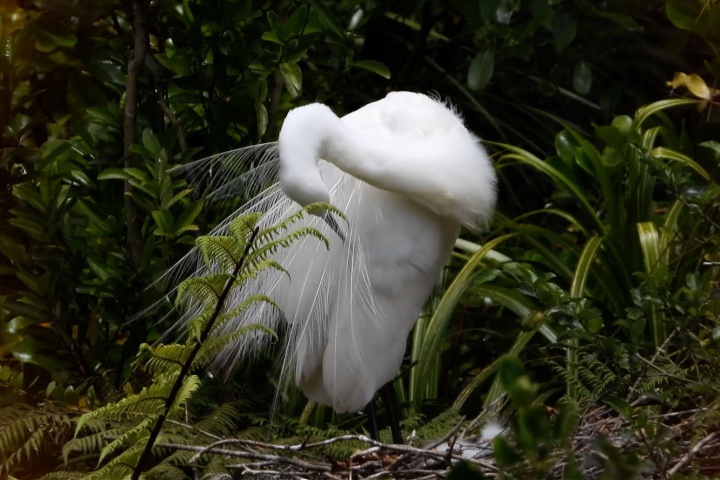Connection And Belonging Explored In New Exhibitions At Te Whare Toi O Heretaunga
“Sometimes the threads of connection are so obvious that they’re never really discussed.”

Sorawit Songsataya, Comfort Zone, 2021
This is how Tāmaki Makaurau-based artist Jeremy Leatinu’u (Ngāti Maniapoto, Sāmoa) describes why his moving image works, which open at Te Whare Toi o Heretaunga – Hastings Art Gallery this weekend, trace the journeys of people finding home in Aotearoa New Zealand.
The exhibition, called Mei i ngā kei o te waka ki te ihu o ngā waka, centres on Leatinu’u’s family home, which overlooks the portage of early arrival in Ōtāhuhu. The title translates in English to “from the front of the canoes to the back of the canoes”, suggesting multiple viewpoints which comprise a collective journey.
The three haerenga (journey, trip, parting) which make up this body of work explore two of the threads of Leatinu’u’s own whakapapa, putting them in conversation with the arrival of European settlers.
“I think there’s an expectation that we already know [the connections], that we get it, but there’s always nuances in everybody’s story. Those are the nuances I’m interested in because it helps differentiate someone’s experience - their world view, or their perspective on their own whakapapa or history, and the whakapapa and history in relation to a place that they don’t have a connection to.”
The first haerenga recalls the voyage of Tainui iwi from Hawaiki to Aotearoa. The second haerenga picks up five centuries later, recounting the arrival of the Queen’s Army to Ōtāhuhu in the early 1860s, while the third haerenga brings us to the present day in Leatinu’u’s parents’ home, which he describes as a marae for his Sāmoan extended family, where the door is always open to visitors.
“The house in Ōtāhuhu is the bastion for all our family, so whenever they come to Auckland, they go straight to the house. The address has never changed since the ‘80s, so they know where to go… Buying it was a milestone for [my parents], because it was the start of them investing permanently in New Zealand,” he says.
“Both my grandparents were ministers of the church that was in Ōtāhuhu. So we would have lots of people visiting, staying, [or] staying with the intention of living in New Zealand, so there was always people coming and going.”
Leatinu’u, who attended Hastings’ Ebbett Park Primary School as a child when his parents came down to work in the fruit industry for a time, says while each of the films proposes traces of different intentions of settlement in the area, there is also common ground between the three groups of people referenced.
“They all kind of were wanting, are wanting, the same in terms of moving to a new place. I feel like that’s an ongoing thread for people today who migrate or immigrate to a new place, there are all sorts of reasons for that and the reasons in those three stories are all very similar, even though they have three different groups of people with interwoven histories.”
Leatinu’u says he specifically wanted to bring this work to Te Matau-a-Māui, because of the similarities in journeys of arrival here, from ngā waka Māori to Captain Cook and Tupaia to the many whānau from the Pacific who still journey here to work in the fruit industry.
The theme of journeys is also explored in Te Whare Toi o Heretaunga’s second exhibition opening this weekend. Titled Comfort Zone, by Sorawit Songsataya, this moving image work combines animation and film to explore the kotuku, or white heron, and its only nesting ground in New Zealand.
Narrated by Awa Puna (Ngāti Kahungunu ki Wairoa), Comfort Zone explores the proximities between human, non-human, and celestial forms, testing our collective fundamental sense of connection and belonging within the natural world in the process.
- Te Whare Toi o Heretaunga – Hastings Art Gallery is open from 10am till 4.30pm, Monday to Friday, 10am till 4pm Saturdays, and from 1pm till 4pm on Sundays.


 Athletics New Zealand: Sam Ruthe Smashes Four-Minute Mile Barrier, Makes History In Auckland
Athletics New Zealand: Sam Ruthe Smashes Four-Minute Mile Barrier, Makes History In Auckland University of Auckland: Government Stuck In The Past With ‘Relationship And Sex Education Guidelines’
University of Auckland: Government Stuck In The Past With ‘Relationship And Sex Education Guidelines’ Howard Davis: Circa Theatre Needlessly Reimagines Noël Coward’s Blithe Spirit
Howard Davis: Circa Theatre Needlessly Reimagines Noël Coward’s Blithe Spirit Christchurch Cathedral: Christ Church Cathedral Exhibition “A Love Letter To The City”
Christchurch Cathedral: Christ Church Cathedral Exhibition “A Love Letter To The City” Hastings Meatball Festival: Unbelievaball Turnout And Second Year Confirmed For Hastings Meatball Festival!
Hastings Meatball Festival: Unbelievaball Turnout And Second Year Confirmed For Hastings Meatball Festival! MelNet: New National Strategy Launched To Combat World's Highest Skin Cancer Rates
MelNet: New National Strategy Launched To Combat World's Highest Skin Cancer Rates